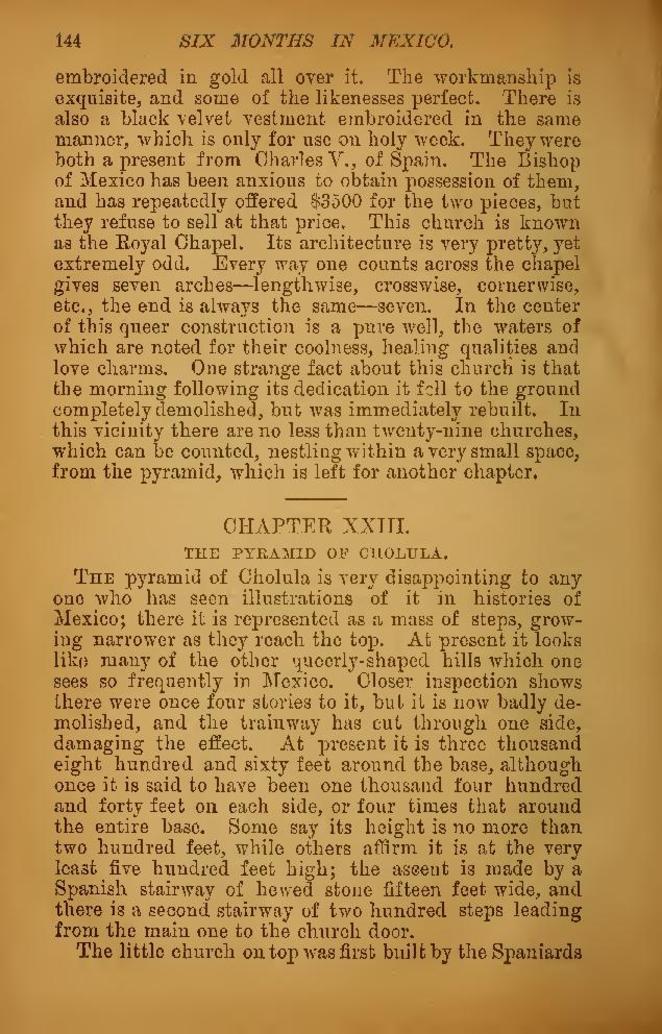embroidered in gold all over it. The workmanship is exquisite, and some of the likenesses perfect. There is also a black velvet vestment embroidered in the same manner, which is only for use on holy week. They were both a present from Charles V., of Spain. The Bishop of Mexico has been anxious to obtain possession of them, and has repeatedly offered $3500 for the two pieces, but they refuse to sell at that price. This church is known as the Royal Chapel. Its architecture is very pretty, yet extremely odd. Every way one counts across the chapel gives seven arches—lengthwise, crosswise, corner wise, etc., the end is always the same—seven. In the center of this queer construction is a pure well, the waters of which are noted for their coolness, healing qualities and love charms. One strange fact about this church is that the morning following its dedication it fell to the ground completely demolished, but was immediately rebuilt. In this vicinity there are no less than twenty-nine churches, which can be counted, nestling within a very small space, from the pyramid, which is left for another chapter.
CHAPTER XXIII.
THE PYRAMID OF CHOLULA.
The pyramid of Cholula is very disappointing to any one who has seen illustrations of it in histories of Mexico; there it is represented as a mass of steps, growing narrower as they reach the top. At present it looks like many of the other queerly-shaped hills which one sees so frequently in Mexico. Closer inspection shows there were once four stories to it, but it is now badly demolished, and the trainway has cut through one side, damaging the effect. At present it is three thousand eight hundred and sixty feet around the base, although once it is said to have been one thousand four hundred and forty feet on each side, or four times that around the entire base. Some say its height is no more than two hundred feet, while others affirm it is at the very least five hundred feet high; the ascent is made by a Spanish stairway of hewed stone fifteen feet wide, and there is a second stairway of two hundred steps leading from the main one to the church door.
The little church on top was first built by the Spaniards
